M/Cing to SA: the nuts and bolts of South American life

South American Checker Cab. Many South American's can't afford a car and Tuk Tuks are the primary method for inner city transportation. They're a three wheeled version of a m/c with an enclosed (canvas) passenger compartment. Engine serves as heater as well.
Going to a foreign country, or in our case a foreign continent, gives one the chance to get an insight into how other people live. South America was a perfect place to do this as its close enough to get to, yet far enough away to be different. I was expecting to be impressed by the food, dress, architecture, art — the regular stuff of visiting foreign lands.
But it was the nuts and bolts of their life that stuck with me most after our trip. We Americans live a charmed life in so many little ways. Our trash is picked up every week, we always have enough electricity. Paper towels, napkins, and toilet paper are in abundant supply. We don’t have to memorize three different ways to dial a phone depending on what kind of phone we”re using and where we’re calling from/to. We have street signs and good maps. Money is available on every corner as banks and ATMs are ubiquitous. Want to buy a TV that’s more than you can afford this week? No problem, put down the MasterCard and pay it off next month or the one after that.

Need a washing machine or TV set? You can buy them in the same store in many towns in SA. Motorcycles are viewed in the same mode as a washing machine -- basic utility. Small m/cs (125ccs and less) are the primary method of personal transportation throughout SA. Probably more so than washing machines and ovens.
It’s these little things that make all the difference. And so it was that over the 90+ days we were in SA, we became more familiar with the nuts and bolts of life, which gave us a better insight into how people in SA live than any of the regular stuff.
Let’s talk trash, for example. We pay a company/city to pick it up every week. There’s a system of containers, times, recycling, etc. that happens as automatically as a dial tone on our phone. It’s not so automatic in small towns in Bolivia or Peru. Or, for that matter, in lots of places in Mexico. There’s not much infrastructure to do this because there’s no… (1) tax base to pay for it (2) no place to put it (3) no money to pay for it (4) no containers to use, etc.
Here’s the rub: most South American towns/cities that we visited were remarkably free of trash. So, what do South American’s do? They do it on a block by block basis; pickup trucks come by and take the trash piled on an agreed-to street corner every day. I assume that these trash picker uppers make their money by selling the recyclable trash, but I don’t know.
Once outside bigger cities, you see dumps that collect trash in almost every village. Can you imagine having to carry your trash to a dump every couple of days? And if you don’t have a car, how likely are you to take the trash down the street to the dump? Hence, many houses create their own mini dumps and eventually burn it.
The lack of high-volume trash processing infrastructure has other affects; South Americans consume less and reuse more. Toilet paper is a well-regulated commodity in hotels; you get one small roll per day. Napkins? Paper thin and watched closely. Plastic soda bottles? Reused to carry everything from gasoline to water. After a while, the idea of consuming less becomes a habit, and not a bad one at that. You need smaller dump sites and Toyota pick ups can handle the neighborhood trash needs.
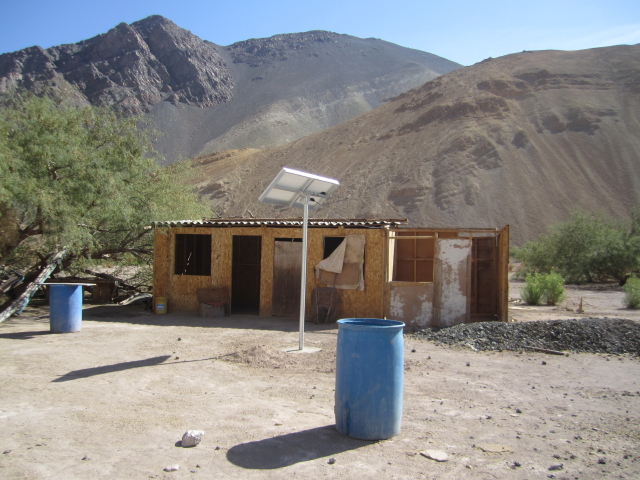
This house was a five hour drive from Copiapo, Chile. Located in the high Atacama, recent addition of solar panel allowed refrigeration, lights and ... an Internet satellite dish!
Technology is your friend, especially if you live high up in the Andes. Living “off the grid” is the only alternative in many villages and towns in Peru, Bolivia, and Chile. Laying electrical, telephone, water, sewage lines isn’t going to happen in our life time. Remote villages in South America are discovering solar power. We stayed with a family who had one panel on the roof of their house with a wire strung to a set of car batteries. This single solar panel gave each room light via a single florescent bulb. And for the first time, this family could read, or listen to a radio, or look at pictures from gringo tourists at night in their kitchen.
Much like the USA, solar power is made affordable by government grants in countries like Peru. There are a lot worse uses of tax dollars (or Soles or Bolivianos) as it literally changes lives and living conditions. Imagine what will happen when the cost of solar and other alternative sources becomes affordable on a large scale in South America?
South American kids aren’t suffering for lack of mobile phone connectivity. Whether in Seattle or Santiago, their attachment to all things mobile is the same. Every kid had some kind of mobile phone or game and had their head buried in its screen. Same thing goes for adults as mobile phone use on the road is widespread. Conservation of this critical resource (minutes) is top of mind. Since there is no monthly billing for the most part in South America, everyone buys minutes from magazine stands and mini markets. (I’m not sure whether mobile phones can be used as payment vehicles like they are in Asia) Mobile phone reception was remarkable even in the most remote places. My Blackberry rarely gave me the SOS indicator.
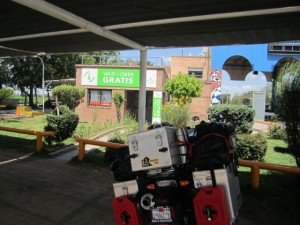
Even toll stations have Wi Fi connectivity in Argentina. This shot is in the middle of the Pampas at a toll booth, which has a 100 sq ft convenience store and one table. We used the one table to Skype Sam and Ryan to get advice on another road side repair.
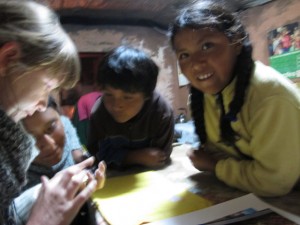
We stayed with a family on a remote island in Lake Titicaca, Peru. The kitchen served as living room, dining room and itchen. Floresent lights allowed kids to show pictures from previous gringo guests.
Same thing goes for Internet connectivity; it’s everywhere in most of South America. Only two hotels in 95 days of traveling didn’t offer Wi-Fi. Many Argentine and Chile gas stations offer free Wi Fi. Internet cafes are still going strong, tucked away in every nook and cranny of Cusco, or Arequipa, or Puno. Everyone has an email address, or a blog, or a FaceBook page. Exchanging contact information with people we met along the way meant getting their email address, not their phone number.
Traveling in South America is an audio experience as much as a visual one. There’s lots of noise. Trucks grunt, cars and m/c’s beep their horns, pickups with loudspeakers in their beds blast advertising messages, and even trash trucks play music as they move down the street. Street musicians and bands can be heard on many city streets. The Latin stereotype of being passionate people is to some degree accurate, as people in South America tend to speak louder with more gestures than we Norte Americanos. And, they do it more often with a smile on their face.
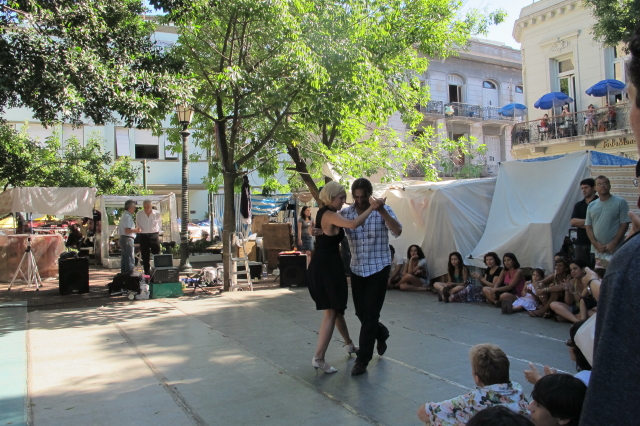
On almost any day, but especially on the weekends, Tango dancers can be found on most parks in the San Telmo neighborhood of Buenos Aires. They dance for tips in the day and then perform formally in shows at night. Never a dull moment in BA.
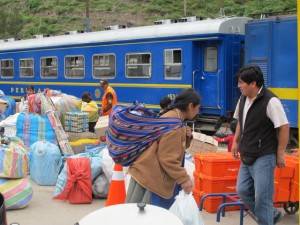
Loading supplies onto the only train that goes through the Sacred Valley. This woman loaded as much, or more, than her husband during the few minutes that the trains was available
Women of all ages are beasts of burden in Peru and Bolivia. They carry wood, crops, food, kids, tools, clothes and anything else you can imagine on their backs via a sack called Keperina. It’s common in the Andes to see women and their children walking along a road with their Keperina’s stuffed full, far away from any apparent destination. These women are strong, as I know I couldn’t carry all this stuff at altitudes of 12-15,000 feet. What’s more, their faces mask any exertion, as they are more likely to be smiling than grimacing. ( A side note to illustrate the point. While we were staying with the family on the Lake Titicaca island, we decided to walk up to a nearby mountain top to take in the view. OK, we’re not talking about K2 here, but I was huffing and puffing just taking one step at a time. I look over at our guide — the mother of the family we were staying with — and she’s knitting while she walks. Evidently, we were going so slow that she could catch up on her stitches;) ) We didn’t see many men carrying stuff as we women. Karen wondered if the men worked at all. If not, Peru is on my list of places to live 🙂
Yes, I”ll remember Machu Picchu, the snow packed peaks of the Andes, the thunderous sound of the Iguacu Falls, and the vastness of the Atacama forever. But I’ve also come away with what I really wanted, which was to get a taste of how other people live. I’ll never take trash removal for granted ever again.
Did I get it wrong or do you have something to add? We met a lot of people in South America who became our friends and now read TRT. There’s no way the above can be anything other than a Gringo’s view, so I’d love to know if you think the above is “right” or not, or what else would you add ?
Comments are welcome from everyone, of course. Karen and I look at TRT as just a place where we can talk with our friends along the way.

This isn't a posed picture. Everyday working people were quick to smile. This is a truck driver in the city of Ilo as he backs his truck up to the fish market.
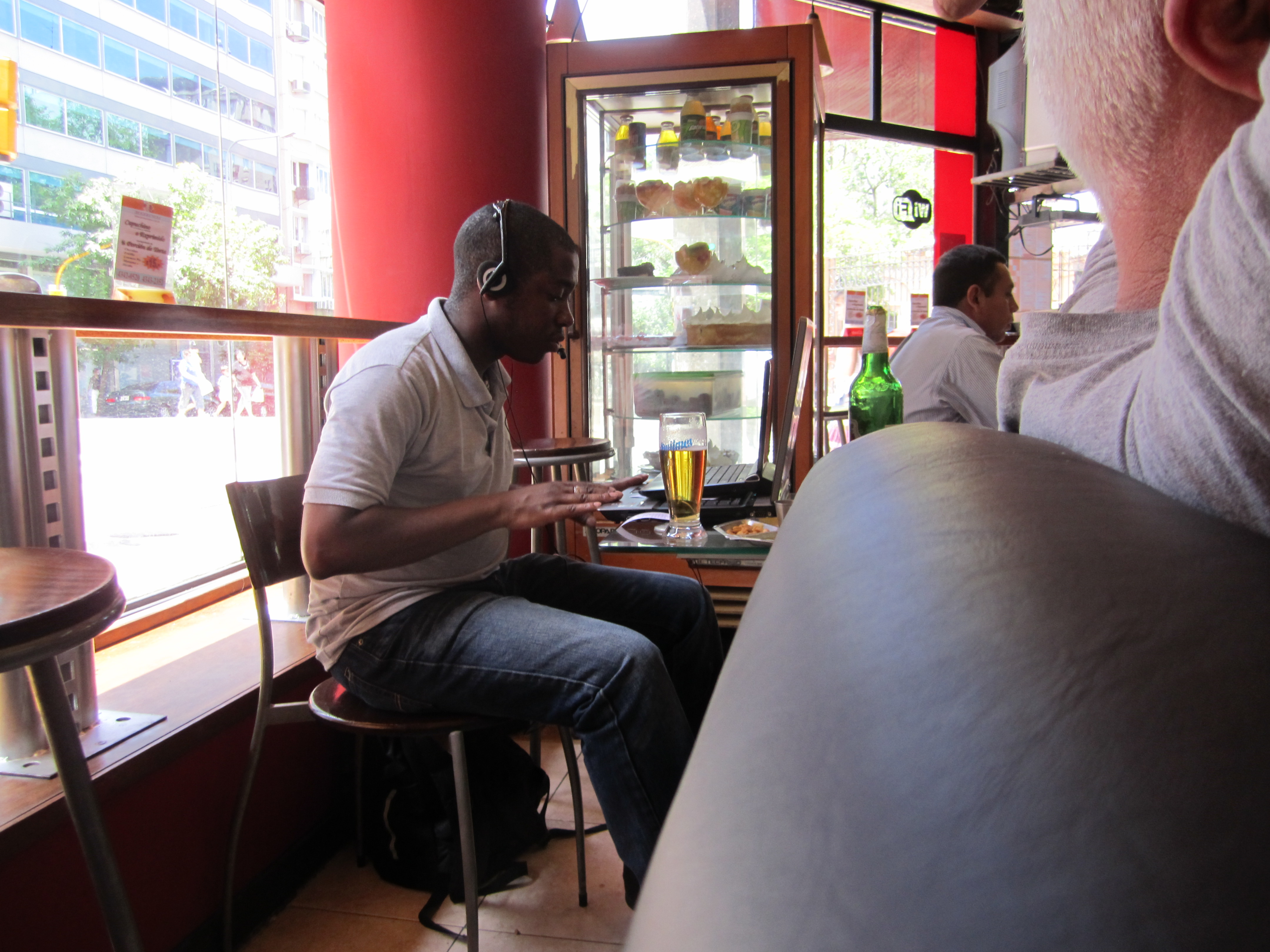
My hero. This guy has two computers going in a cafe in Buenos Aires. He's using Skype to talk with a customer while using the second one for some other task, all the while sipping a beer. They do business differently in Latin America.
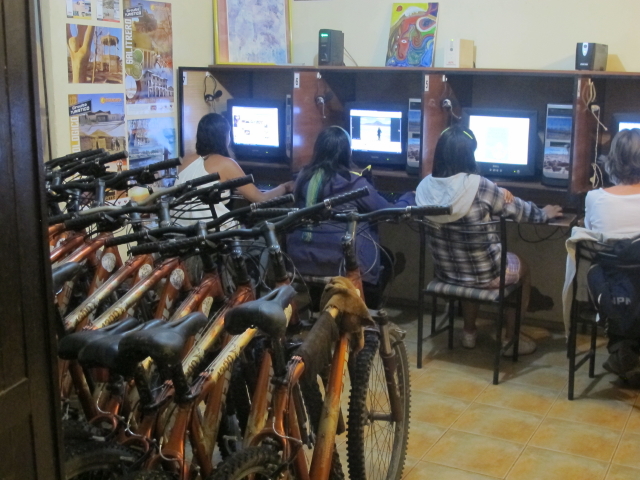
Typical South American dexterity of thought. Jam-packed Internet Cafe in San Pedro de Atacama is combined with a mountain bike rental agency. Makes sense if you think about who uses both services.

Grid or maze? Typical "infrastructure" in South America is not too scalable without access to a Ouija board. Puerto Vallarta has similar electrical spaghetti. Makes for happy workers with lots of job security.
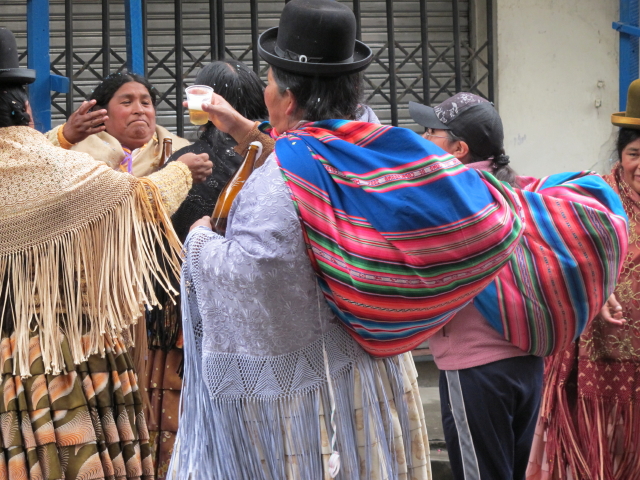
Always time for a cold one. Group of women standing in the street in La Paz, celebrating.... Carnivale.

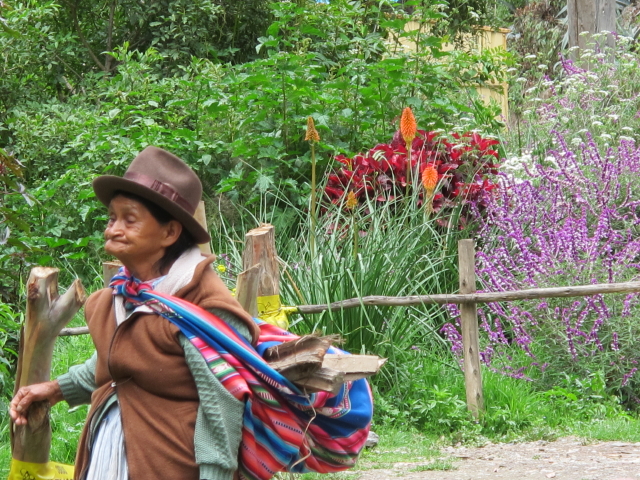

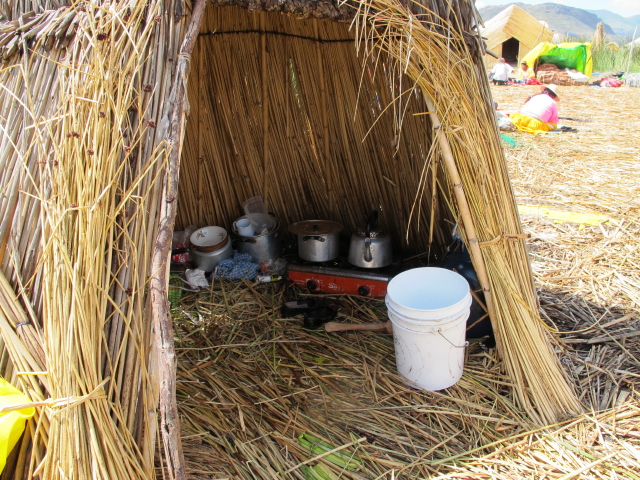
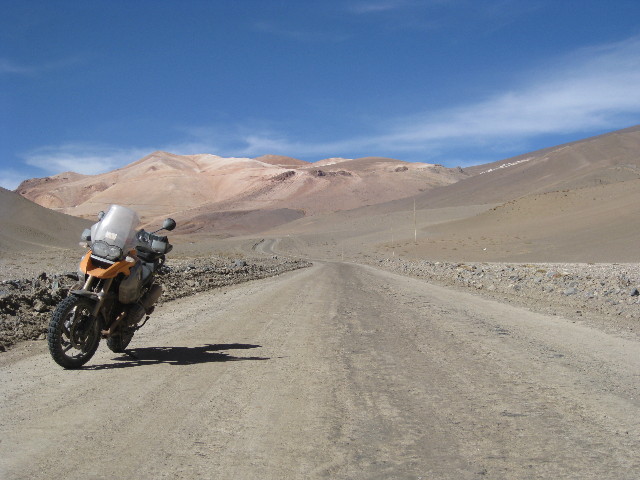
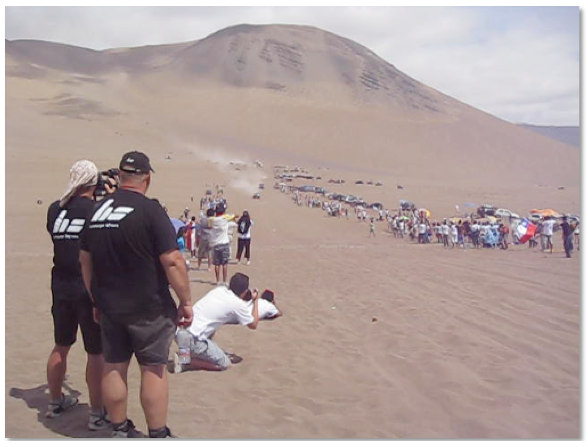
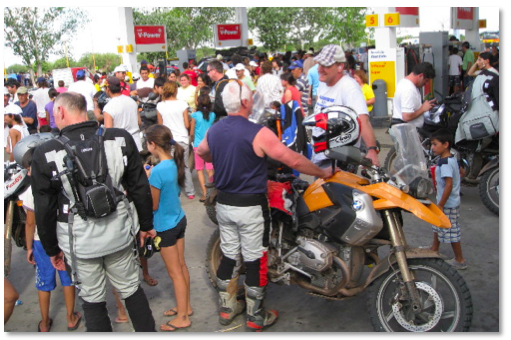
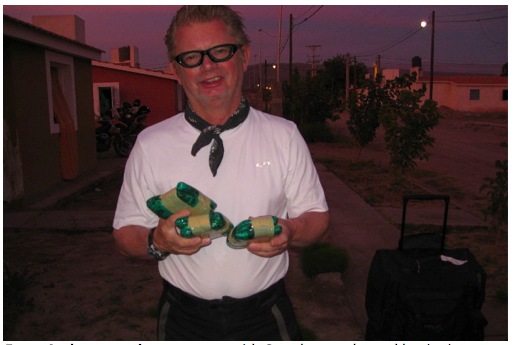
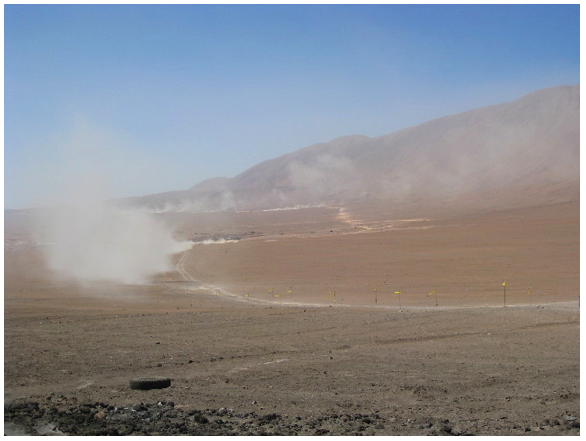
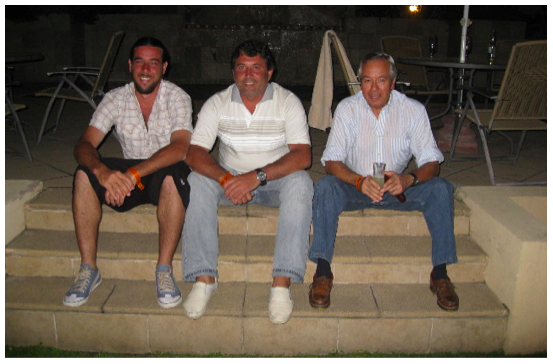

My brother in law just came back from Arg. and there was a trash strike in BsAs the day he got there. The stre
ets were full of trash, with kids rummaging for recyclables. He went to bed, and miraculously, the strike was resolved and all evidence disposed of before he arose the next morning!
Uncle Fred,
I’ve enjoyed the ride…will look forward to future trips when I can live vicariously through y’all. Only wish we would’ve hooked up when we were in LA…Oh well, maybe you’ll head east at some point.
Love to you & KR
Lynn
Hi, i was just passing by and discover this site. The only thing i have to sa: beware of the use of “Shouth America”. There are a lot of diferent countries in this South America you are talking about, with really diferent kind of people and culture. Yes, you are mentioning some countris of this “Big, big South America you are talking about, but i think is it the same someone from new york city or from texas?, i can only equal them saying that they both are american cause they live in the same country. But that´s not the same to say “he” is from Peru, Chile, Bolivia, Brazil, Argentina, Colombia, or Mexico that geografically is Central America. I hope north american people understand some day they are not the center of the universe, i hope some day they respect the countries and the people from other countries. That`s just what i wanted to say. Sorry if i disturbe you in any way.
Alejandra- All very good points. Argentina is very different from Chile, which is totally different from Peru, etc. Thanks for the thought.